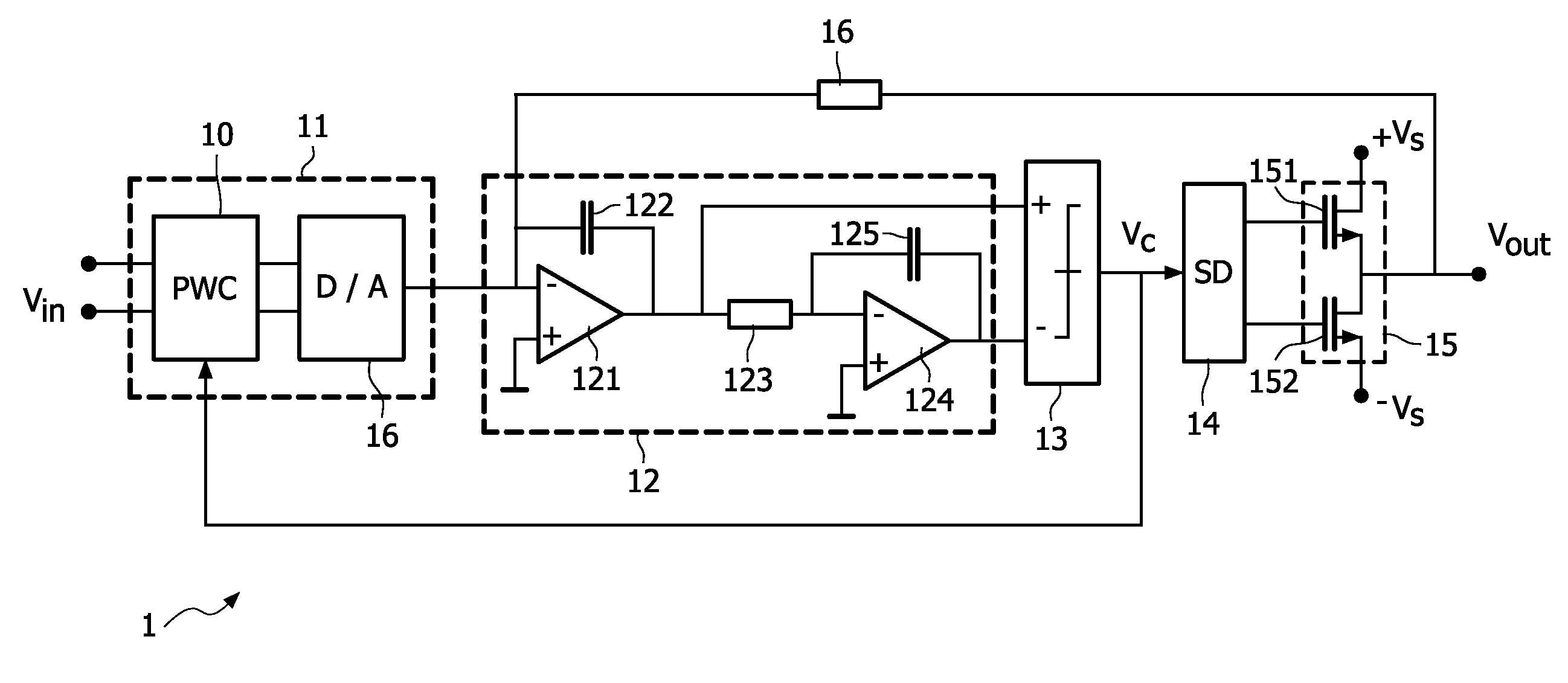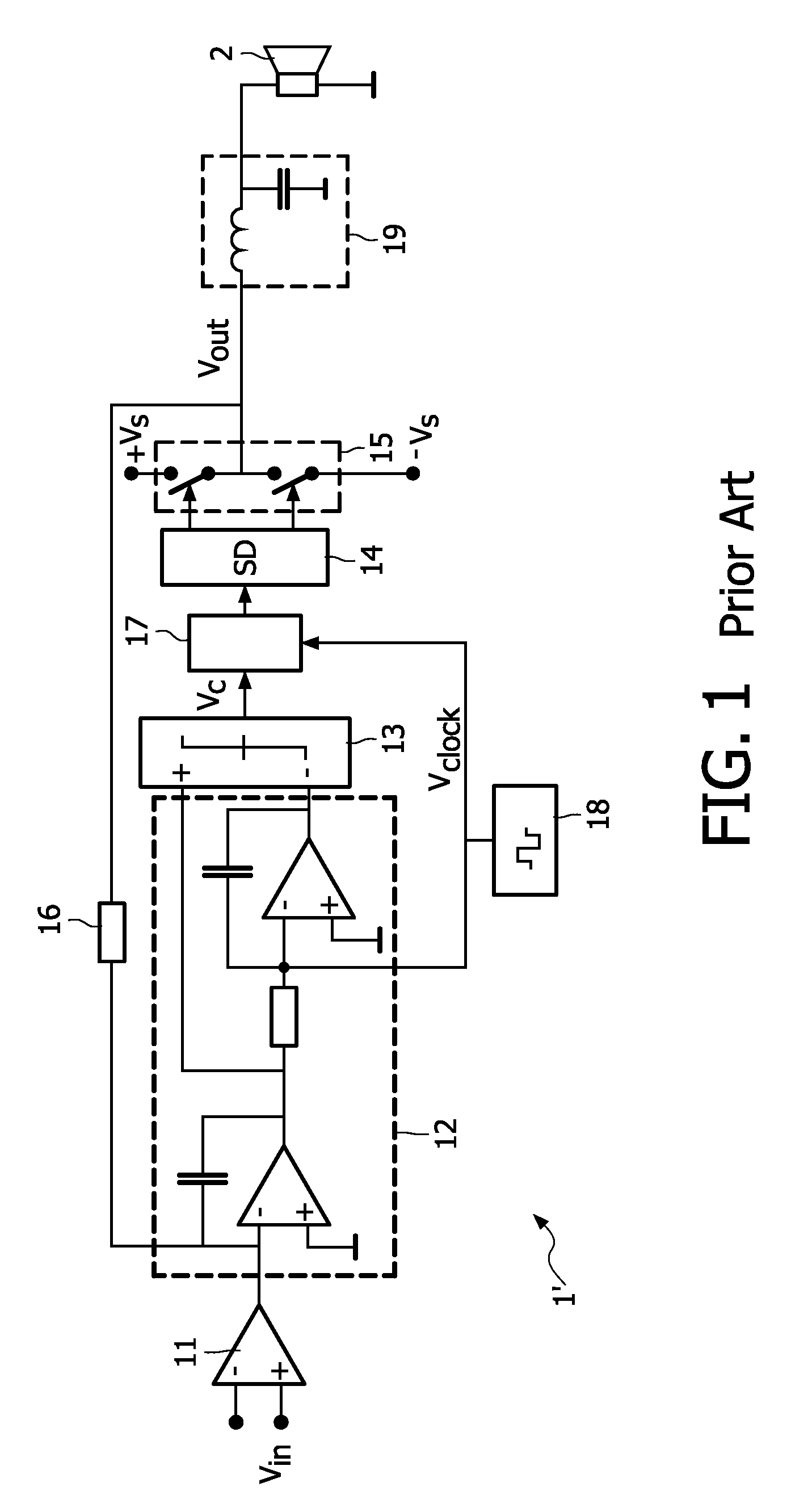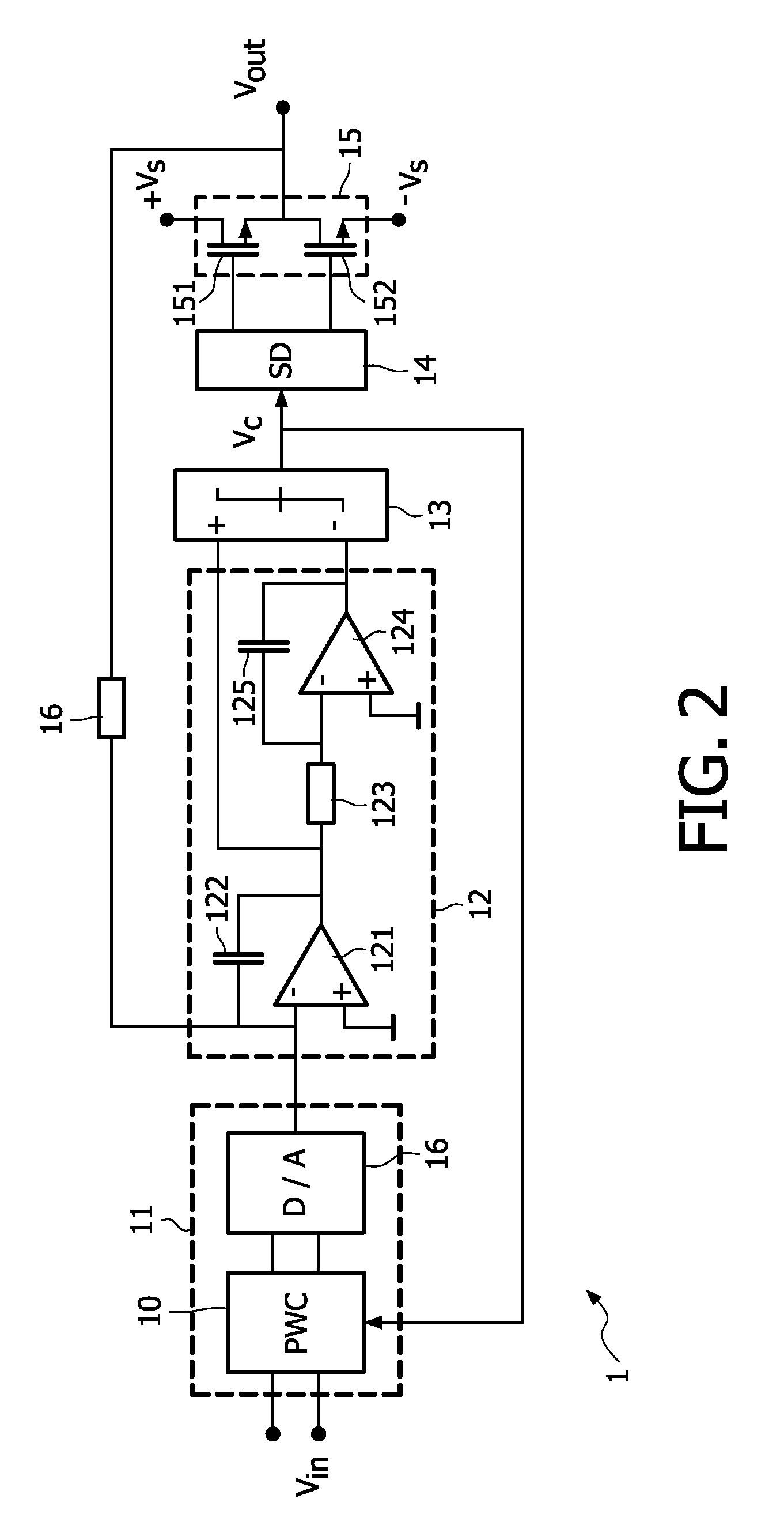Class D audio amplifier
a technology of audio amplifier and output signal, applied in the direction of amplifiers, dc amplifiers with modulator-demodulator, semiconductor devices/discharge tubes, etc., can solve the problems of affecting the modulation depth of output signal, the output signal of the amplifier to have a greater modulation depth than, and the output signal to have a greater modulation depth. , to achieve the effect of improving clipping recovery
- Summary
- Abstract
- Description
- Claims
- Application Information
AI Technical Summary
Benefits of technology
Problems solved by technology
Method used
Image
Examples
Embodiment Construction
[0031]The Prior Art class D amplifier 1′ shown in FIG. 1 comprises an input unit 11, a pulse shaping unit 12, a comparator unit 13, a driver unit 14, a switching output unit 15, a feedback resistor 16, a pulse width modulation limiter 17, and an oscillator (clock pulse generator) 18. The output of the amplifier 1′ is coupled to a demodulation filter 19, which in turn is coupled to a loudspeaker 2. The amplifier 1′ is discussed in more detail in U.S. Pat. No. 6,577,186 mentioned above.
[0032]In the amplifier 1′ the input unit 11 converts an analog input voltage into an analog input current. The pulse width modulation unit 12 comprises two integrators, each constituted by an opamp and a capacitor, the output of each integrator being coupled to a respective input of the comparator unit 13. A clock signal generated by the oscillator 18 is fed to the input of the second integrator.
[0033]Between the comparator unit 13 and the driver unit 14 a pulse width modulation limiter 17 is interposed...
PUM
 Login to View More
Login to View More Abstract
Description
Claims
Application Information
 Login to View More
Login to View More - R&D
- Intellectual Property
- Life Sciences
- Materials
- Tech Scout
- Unparalleled Data Quality
- Higher Quality Content
- 60% Fewer Hallucinations
Browse by: Latest US Patents, China's latest patents, Technical Efficacy Thesaurus, Application Domain, Technology Topic, Popular Technical Reports.
© 2025 PatSnap. All rights reserved.Legal|Privacy policy|Modern Slavery Act Transparency Statement|Sitemap|About US| Contact US: help@patsnap.com



